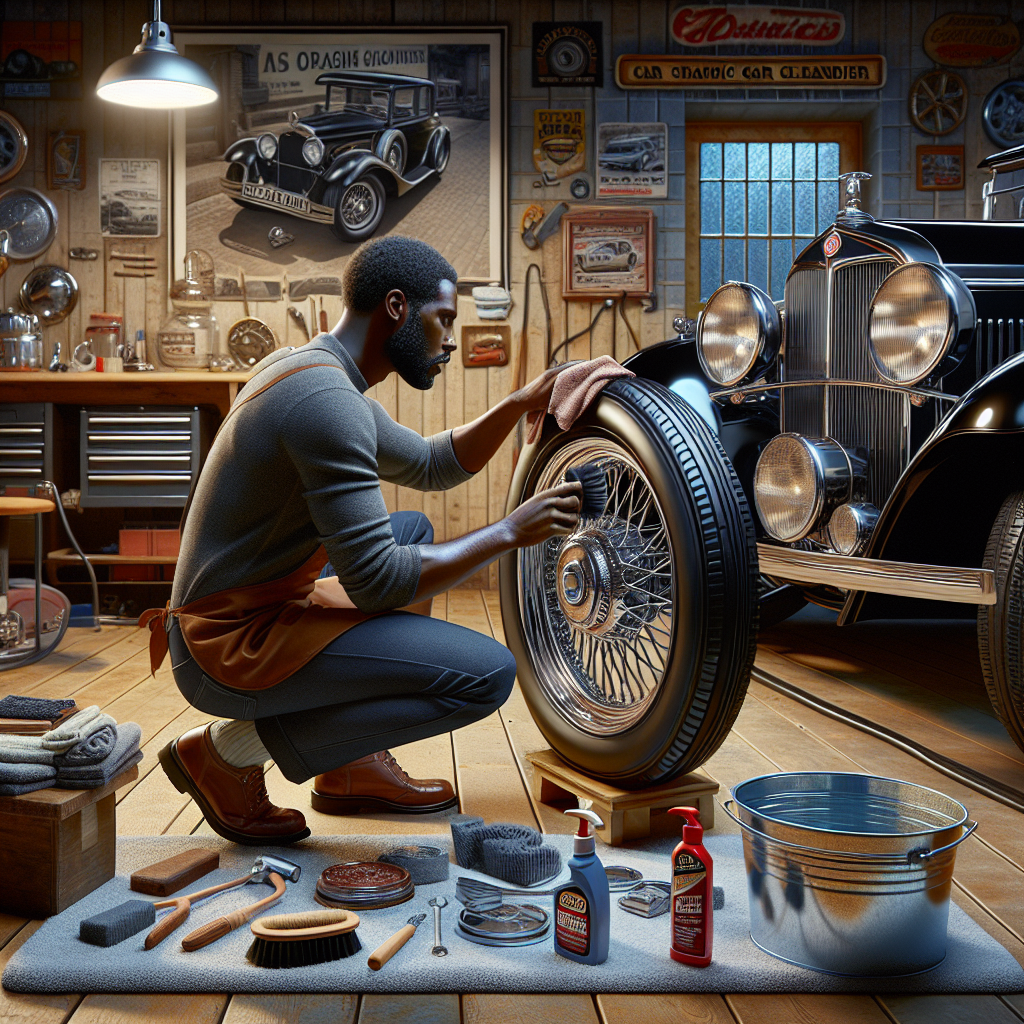If you are a proud owner of a vintage or classic car, you understand the importance of keeping your wheels pristine. Whether you want to restore their original glory or simply enhance their appearance, knowing how to clean these wheels is essential. With the right techniques and products, you can effortlessly remove dirt, grime, and brake dust, revealing a shining surface that complements the overall beauty of your cherished vehicle. In this article, we will guide you through the step-by-step process of cleaning wheels on vintage or classic cars, ensuring that you maintain their timeless allure.
Preparing the Wheels
Before you begin cleaning the wheels on your vintage or classic car, it’s important to gather all the necessary supplies. This will make the process much easier and ensure that you have everything you need at hand. Some of the supplies you may need include a bucket, a hose or pressure washer, a wheel brush, a soft cloth or microfiber towel, and a cleaning solution.
Once you have your supplies ready, the first step in preparing the wheels is to remove any hubcaps or trim rings. These can often trap dirt and debris, making it difficult to clean the wheels properly. Carefully remove them and set them aside in a safe place.
Next, you’ll need to remove the wheels from your car. This will allow you to clean them thoroughly and access all the nooks and crannies. Follow the instructions in your car’s owner manual to safely remove the wheels, ensuring that you have the proper tools and equipment on hand.
Choosing the Right Cleaning Solution
When it comes to cleaning vintage or classic car wheels, it’s important to choose the right cleaning solution. Using the wrong product can potentially damage the wheels or harm delicate finishes. Therefore, it’s crucial to select a cleaning solution that is suitable for your specific wheels.
Avoid using abrasive cleaners as they can scratch the surface of your wheels, especially if they have a polished or chrome finish. Instead, opt for mild or non-acidic cleaners that are gentle yet effective at removing dirt and grime. These types of cleaners are less likely to cause any damage and are safer for your wheels.
There are also wheel-specific cleaners available on the market, which are formulated to tackle the unique challenges of cleaning automotive wheels. These cleaners are designed to remove brake dust, road grime, and other contaminants that can accumulate on the wheels of your vintage or classic car. Consider using a wheel-specific cleaner for the best results.
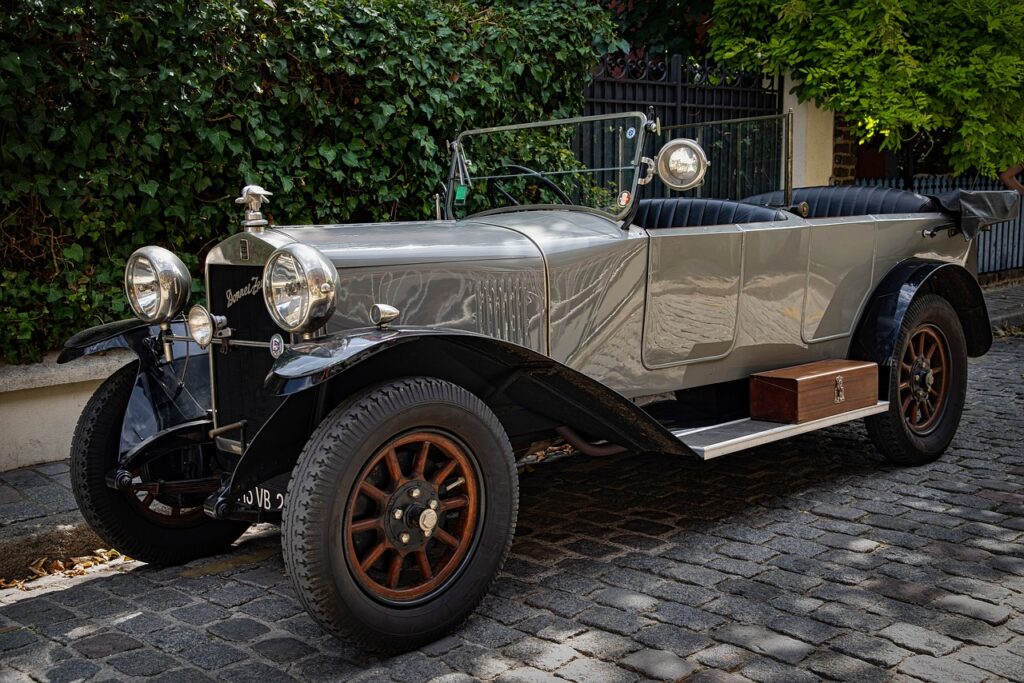
Cleaning the Wheels
Now that you have gathered your supplies and selected the right cleaning solution, it’s time to start cleaning the wheels. Here are the steps to follow:
- Begin by rinsing off any loose dirt and debris from the wheels using a hose or pressure washer. This will help remove the surface-level contaminants and make the cleaning process easier.
- Apply the cleaning solution to the wheels, making sure to cover all areas, including the spokes, rims, and inner surfaces. Allow the cleaner to penetrate and break down the dirt and grime.
- Use a soft-bristled wheel brush to scrub the wheels gently. Pay close attention to the spokes and other intricate details, as these areas tend to accumulate more dirt. Be thorough but avoid using excessive force to prevent scratching the wheels.
- Don’t forget to clean the nooks and crannies of the wheels where dirt and debris can easily accumulate. Use a smaller brush or even an old toothbrush to reach these tight spaces.
- Once you have scrubbed the wheels, thoroughly rinse them to remove any remaining cleaning solution and loosened dirt.
- To prevent water spots and streaks, dry the wheels with a microfiber towel or a soft cloth. This will help achieve a clean and shiny finish.
Removing Stubborn Stains or Brake Dust
In some cases, you may encounter stubborn stains or brake dust that is difficult to remove with regular cleaning. Here are some additional steps you can take to tackle these issues:
If brake dust is a persistent problem, consider using a wheel cleaner specifically formulated to remove brake dust. These cleaners are designed to dissolve and lift brake dust particles, making it easier to clean them off the wheels.
Alternatively, you can try a homemade solution by creating a paste using baking soda and water. Apply the paste to the affected areas and let it sit for a few minutes before scrubbing it off with a soft brush. This method can be effective against stubborn stains and brake dust.
If the wheels still have contaminants that won’t come off with regular cleaning methods, you can utilize a clay bar. A clay bar is a special detailing tool that can remove stubborn contaminants like tar, tree sap, and brake dust. Follow the instructions provided with the clay bar to safely and effectively remove these contaminants from your vintage or classic car wheels.
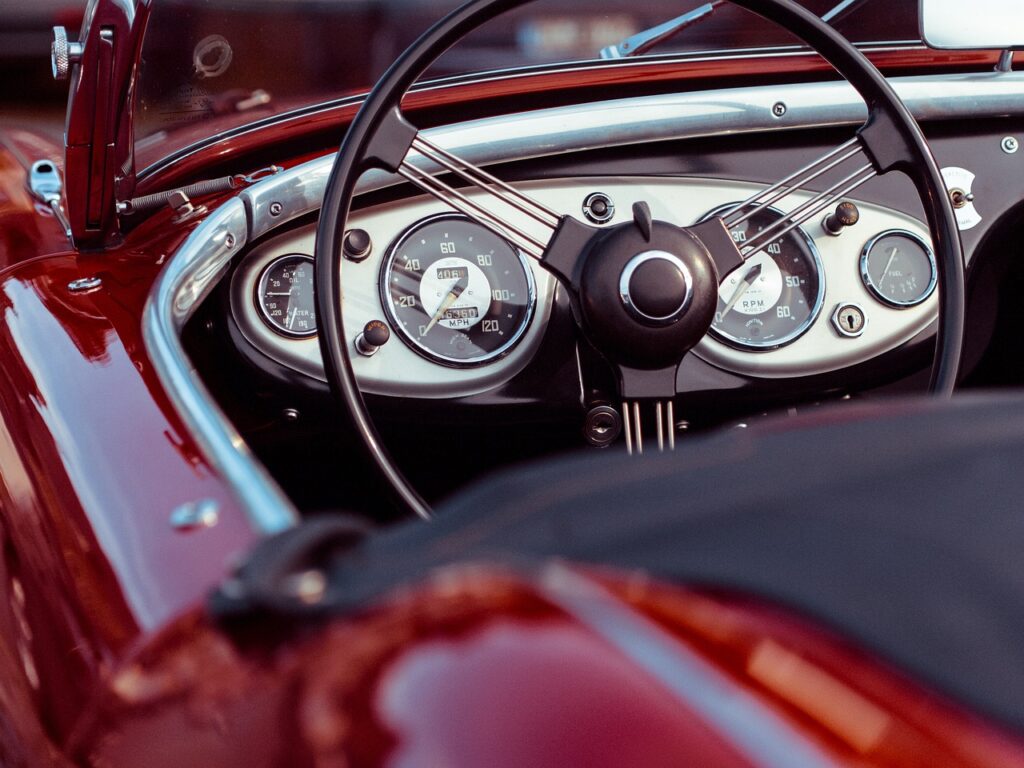
Polishing and Protecting the Wheels
Once the wheels are clean, it’s time to enhance their shine and protect them from future damage. Here’s how:
Select a wheel polish that is suitable for vintage wheels. Some polishes are formulated specifically for certain types of wheels or finishes, so choose one that matches your wheels’ characteristics. Apply the polish using a soft cloth or a polishing pad, following the instructions on the product packaging.
Buff the wheels gently using circular motions to enhance their shine. Be careful not to apply too much pressure or stay in one area for too long to avoid causing damage to the wheels.
To provide an extra layer of protection, consider applying a wheel sealant or wax. These products can help repel dirt and prevent brake dust and other contaminants from adhering to the wheels. Follow the instructions on the sealant or wax to apply a thin and even layer, and allow it to dry before reinstalling the wheels.
Reinstalling the Wheels
Once you have cleaned, polished, and protected your vintage or classic car wheels, it’s time to reinstall them. Here are some steps to follow:
Before reinstalling the wheels, take the opportunity to clean the brake dust shields. These shields can accumulate dirt and grime, so give them a quick wipe down to ensure they are clean.
When aligning the wheels correctly, consult your car’s owner manual for specific instructions. Follow the recommended tightening sequence and torque specifications to ensure the wheels are properly secured.
Tighten the lug nuts properly using a torque wrench to avoid over-tightening or under-tightening. This will help maintain the integrity of the wheels and prevent any safety issues.
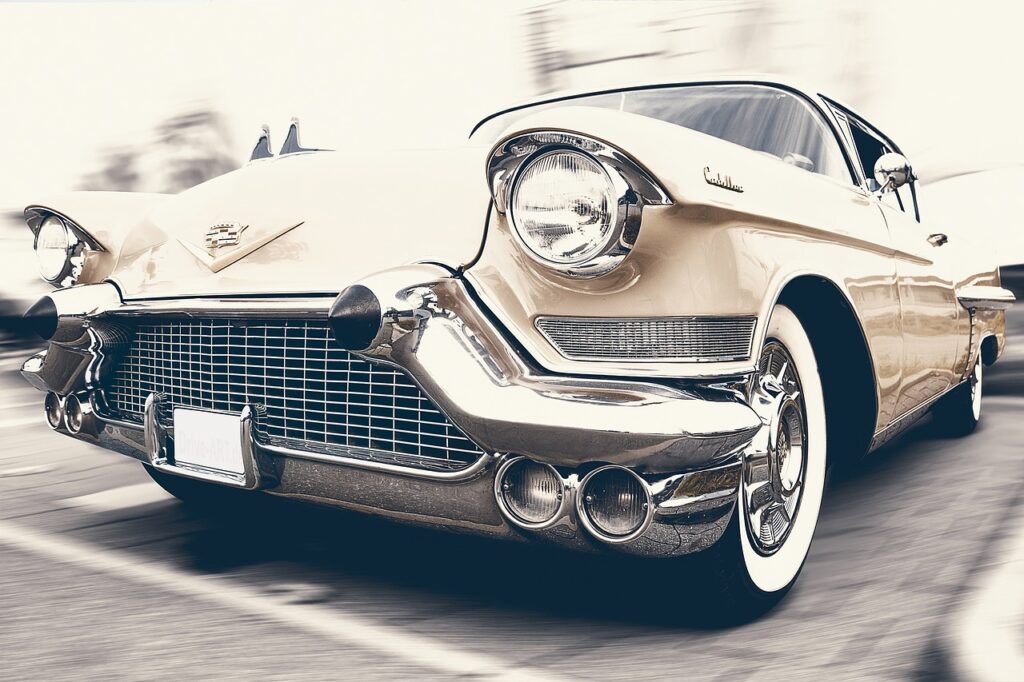
Maintaining Clean Wheels
Keeping your vintage or classic car wheels clean is essential to maintain their authenticity and beauty. Here are some tips for maintaining clean wheels:
Regularly wash the wheels to prevent dirt, brake dust, and road grime from building up. Ideally, wash the wheels at the same time you wash your car to ensure consistency in cleanliness.
Protect the wheels by avoiding harsh conditions such as driving through salted roads, off-roading, or exposing them to excessive heat or chemicals. These conditions can lead to corrosion and damage to the wheels’ finish.
Touch up the wheels as needed by spot cleaning any areas that may have become dirty or affected by road debris. Regular maintenance will help keep the wheels looking their best.
Periodically inspect the wheels for any signs of damage, corrosion, or other issues. If you notice any problems, address them promptly to prevent further damage and maintain the overall condition of your vintage or classic car.
Seeking Professional Help
If you’re unsure about how to properly clean or maintain your vintage or classic car wheels, or if you simply want to ensure the best care for your prized possession, you may consider seeking professional detailing services. Professional detailers have the expertise and specialized equipment to clean and protect your wheels without causing any damage. They can also provide valuable advice on classic wheel care and maintenance.
Additionally, if you own a classic car with unique or rare wheels, it may be beneficial to consult with experts or join vintage or classic car communities to gather insights and recommendations specific to your vehicle.
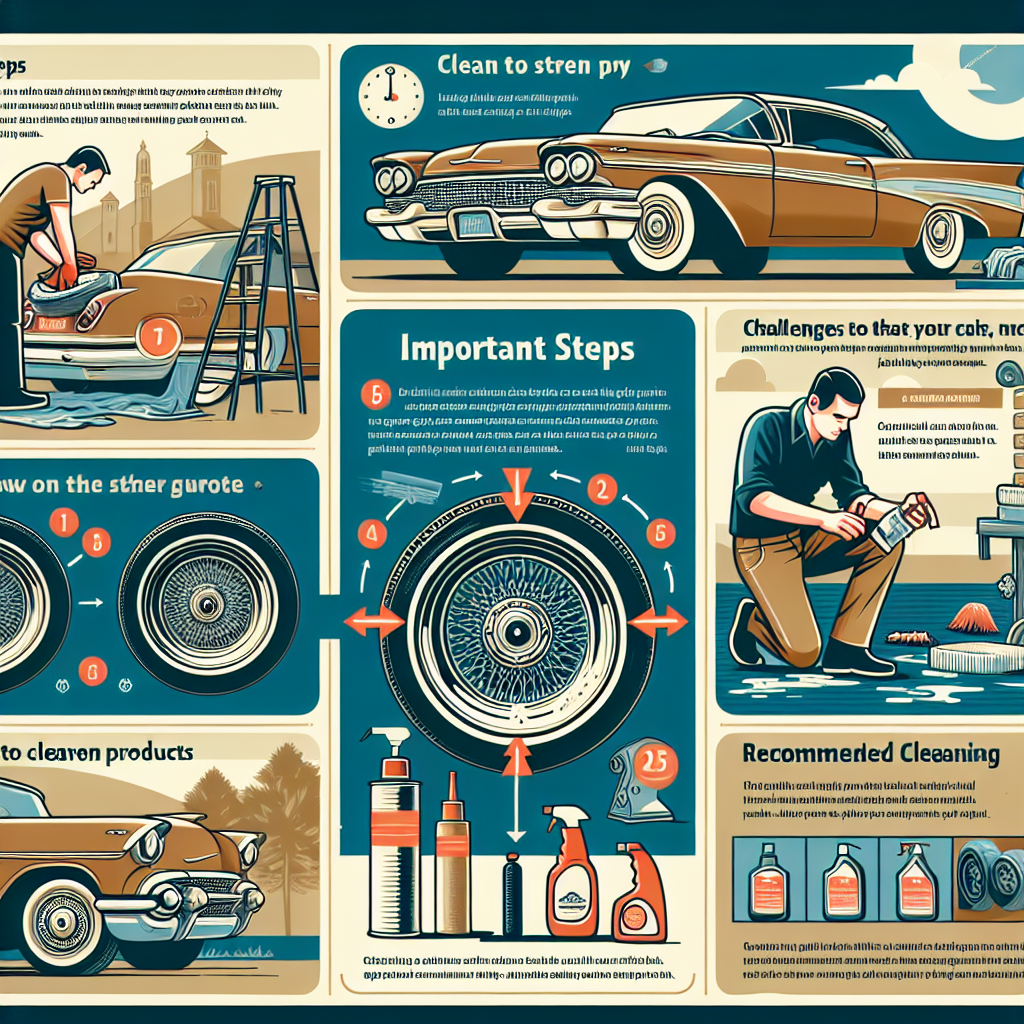
Additional Tips and Precautions
Here are some additional tips and precautions to keep in mind when cleaning vintage or classic car wheels:
Use wheel-specific brushes and tools to avoid damaging the wheels’ finish. Regular household brushes or abrasive tools can scratch and dull the surface of your wheels, diminishing their appearance.
Avoid using high-pressure washers directly on the wheels as this can cause damage. Instead, use a lower pressure setting or opt for a hose and brush to safely clean the wheels.
When cleaning the wheels, work on one wheel at a time. This will ensure that you give each wheel proper attention and prevent the cleaning solution from drying before you can rinse it off.
Protect yourself by wearing gloves and safety glasses when working on the wheels. Cleaning products can sometimes be harsh or cause skin irritation, so it’s important to take necessary precautions to avoid any discomfort.
Conclusion
Cleaning and maintaining the wheels on your vintage or classic car is an important part of preserving their authenticity and beauty. By following the steps outlined in this article, you can effectively clean, polish, and protect your wheels, allowing them to shine and enhancing the overall appearance of your classic car. With proper care and regular maintenance, you can enjoy the satisfaction of a well-maintained classic car and keep the wheels looking their best for years to come.
